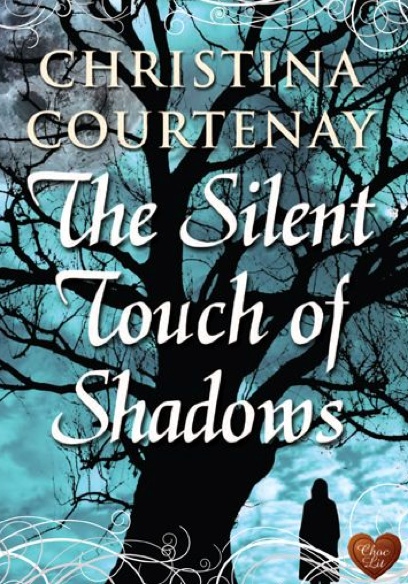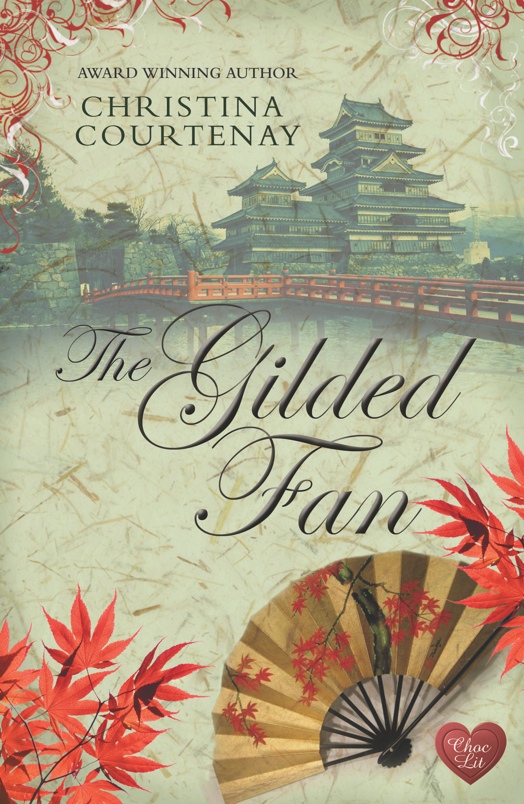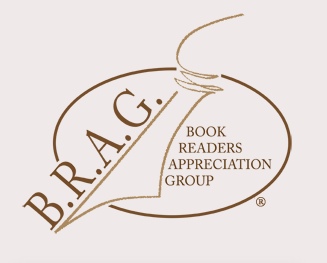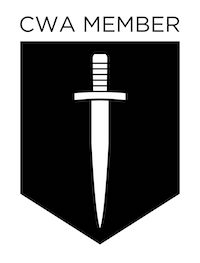For previous excerpt, click here
‘You are dismissed from the Conservancy Corps, with immediate effect. Hand your uniform, ID and any other park property to your supervisor and leave within the next thirty minutes. You have become an embarrassment to the Autonomous City of New York. We cannot stop you as a member of the public entering the park, but you will be watched. That is all.’
I couldn’t believe it. I took a deep breath and grasped the back of the chair.
‘But why are you kicking me out? What have I done?
‘Assaulting a respectable member of the public as he and his friends were quietly enjoying a walk is completely unacceptable. Even more so when drunk.’
‘Drunk? How dare you!’ I was hot as hell with fury. ‘They were all high as kites and attacking a defenceless old Indigenous.’ I took some deep breaths. ‘I did what the training said. I remonstrated with them. I attempted to mediate. I placed myself between them and their victim. It’s all in my report.’ I threw an urgent look over at Chip, desperate for his support. He looked away.
‘Have you quite finished?’ The director looked at his watch.
‘No, I haven’t! The lead one took a swing at me. I ducked. He went for me again, so I hit him on the nose. You know I’m within my rights to defend myself.’ But this was the first time I’d ever had to do it all the years I’d volunteered here. Unlike others, both volunteer and regular, I’d chosen not to carry a nightstick when I was assigned patrol.
‘This interview is finished.’ He nodded to Chip who stepped forward, took me by the arm and ushered me out with a murmured, ‘C’mon, Karen.’
‘What the hell happened there? How can he do that? And I wasn’t drunk. Ask Steff and Tubs. It was eleven in the morning, for Chrissakes!’ I threw my folder on his desk. ‘If it wasn’t so stupid, I’d kill myself laughing.’
Chip shifted his weight from one foot to the other, no grin, his easy fidgeting gone. ‘You bloodied the nose of External Affairs Secretary Hartenwyck’s son. He’s fuming. And Mrs Hartenwyck’s not only on the board of trustees, she’s a major patron of the park.’
I sucked my breath in. Hartenwyck, the second most powerful person in the country. My heart pounded with fear. I closed my eyes and shook my head. He was from one of the old Dutch families, a privileged class who still called the shots even two hundred years after their last governor had sailed out of the harbour in 1813. Even though the British had stepped up from number two position and taken everything over for the next fifty years, the ‘Dutch mafia’ still ran everything today. And I had a British name. I didn’t have a chance.
‘Then they should make sure Junior doesn’t take drugs,’ I said. ‘Or beat up old Indigenous in a public place. The Indigenous Nations Council would wipe the floor with him.’
‘But you can’t produce him to testify.’
‘Steff and Tubs saw him.’
‘They’ve been told to shut their mouths if they want to keep their jobs.’ He looked at me, almost pleading. ‘They’ve both got families, Karen.’
I walked back and forth in front of his desk, waving my arms around, but I sensed it was no use. The decision had been made and Chip was stuck with executing it.
‘So, my four years’ volunteer service and two commendations aren’t worth jack-shit?’
He fixed his gaze on the scuffed door panel directly over my shoulder. ‘I’m so sorry.’
Heat prickled in my eyes, but I was not going to cry. I wouldn’t give him the satisfaction. I walked out, shut the heavy oak door with supreme control, changed back into my jeans and tee in the locker room and left the staff building, my head up. I threw the green park uniform and ID in a public trashcan. Childish, but satisfying.
II
Back at my apartment, I made a cup of tea and sat at the tiny table by the window for three hours. A whole slice of my life had been cut out in a few minutes by some rich-kid druggie. I’d loved the openness of the park, the stunning trees, kids playing naturally, the illusion of being in the country. Not the Nebraska of my teens, but New Hampshire with Dad before he died. Those weekends when we hiked and camped, surrounded by the fresh warm air, the two of us alone. Then the day came when he lay in the hospital bed, skinny thin with his face shrunken like an old man, struggling to whisper my name. As I left the hospital that evening, when he’d fallen into his last sleep, it had rained and the air was sullen. I felt my throat tighten. The pain of losing him was as raw today as it had been all those years ago. I bit my fingernails, gulped, dropped my head in my hands and burst into sobs.
It had to be a mistake. I swallowed my pride, gathered up my grit, like Dad used to say, and spent most of Sunday drafting a respectful mail to the director asking to be reconsidered.
I blinked when a reply hit my inbox within forty minutes.
From the desk of the Director
Madam,
In reference to your recent communication, the Director finds the contents unacceptable and untrue. All allegations or claims against the Autonomous City of New York and all permissions and privileges are hereby rejected. Your record of attendance has been deleted.
The consequences of harassing municipal and public employees are severe and constitute a Class E Non-Violent Felony (CNY Penal Code S180).
You are advised that, on advice from the Department of Internal Security, your name has been placed on a national security watch list because of your antisocial behaviour and foreign parentage.
I stared at the screen. I felt like I’d been struck in the face. This couldn’t be happening. I wasn’t a terrorist or criminal. Sure, my mother had been born abroad, but she’d been dead for twenty-one years. My father was born in England but had been a naturalised American for nearly two-thirds of his life. He’d even been decorated for war service in North Africa. That kid being pissed at me couldn’t have gone this far, could it?
I started shaking.
God. What else could these people do to me?
For next Excerpt III, click here.
INCEPTIO is available in paperback and ebook from a variety of retailers. Click here to find your favourite.
Alison Morton is the author of Roma Nova thrillers, INCEPTIO, and PERFIDITAS. Third in series, SUCCESSIO, is now out.
I
The boy lay in the dirt in the centre of New York’s Kew Park, blood flowing out of both his nostrils, his fine blond hair thrown out in little strands around his head. I stared at my own hand, still bunched, pain rushing to gather at the reddening knuckles. I hadn’t knocked anybody down since junior high, when Albie Jolak had tried to put his hand up my sobbing cousin’s skirt. I started to tremble. But not with fear – I was so angry.
One of the boy’s friends inched forward with a square of white cloth. He dabbed it over the fallen boy’s face, missing most of the blood. Only preppy boys carried white handkerchiefs. Aged around eighteen, nineteen, all three wore blazers and grey pants, but their eyes were bright, boiling with light, cheeks flushed. And their movements were a little too fluid. They were high. I dropped my left hand to grab my radio and called it in. Passive now, the second boy knelt by the one I’d knocked down. The third one sat on the grass and grinned like an idiot while we waited. If they attacked me again, I had my spray.
Keeping my eyes fixed on them, I circled around to the slumped figure lying a few steps away on the grass. Their victim. I laid two fingers on his neck and thankfully found a pulse. After a glance back at his tormentors, I bent my face sideways and felt his breath on my cheek. He groaned and his body tensed as he tried to move. A battered, brown felt hat lay upside down by the side of his head of long silver and black hair stiff like wire. He opened his eyes. Dull with sweat and grime, the red-brown skin stretched over high cheekbones showed he had to be an Indigenous. Well, damn. What was he doing this far east, away from the protected territories?
I heard path gravel crunching as Steff appeared through the cherry blossom cloud, driving his keeper’s buggy with Tubs as shotgun.
‘Karen?’
‘One with a bloody nose, and all three for banning. Tell Chip I’ll do the report as soon as I finish here.’
They herded the three delinquents onto the buggy. Before they left, I helped myself to dressings and swabs from the emergency kit in the buggy trunk. I had to get back to their victim. He sat up and put his hand to his head. He shrank back, his eyes full of fear when he saw me. Maybe it was my green uniform, with its park logo and ‘Autonomous City of New York’ stamped on the shoulder.
My hand started to throb, but I managed to unscrew the top of my water bottle and gave it to him.
‘C’mon, old guy, drink this.’
He lifted his face, grabbed the bottle and drank it in one go. His Adam’s apple bounced above a grimy line on his neck around the level of his disintegrating shirt collar. And he stank. But, right now, he needed my swabs and Band-Aids. Under a diagonal cut on his forehead, a bruise was blooming around his eye to match the one on his jaw. His hand was grazed, with bubbles of blood starting to clot. I cleaned his wounds, speaking calming words to him as I bandaged him up.
‘Okay, let’s get you to the nearest hospital,’ I said, but, as I lifted my radio again, he seized my wrist.
‘No,’ he said.
‘It’s okay, there’s a free one, the other side of the park in Kew Road West.’ Which was just as well, as he plainly couldn’t pay private.
‘No. Thank you. I’m well. I can go now.’
The anxious look in his dark eyes swung between my face and the safety of the tall trees. I’d have to call in for the Indigenous New York Bureau number. As I spoke to Chip, I looked over the lake at the old wood boathouse on the far side. Beyond the trees behind it, the windows in the red-brick Dutch highhouses along Verhulst Street threw the full sun back. When I turned around, the old man had disappeared.
‘You did okay, Karen,’ Chip said later in his office. ‘Little shits. They’ve been processed and taken to the south gate. I checked with the Indigenous Bureau for reported wanderers, but they had none listed.’ He grinned at me. ‘Jeez, the woman there was so prickly and made me feel like Butcher Sherman.’
Every kid knew from school the Indigenous had been more or less protected until the British finally left in 1867, but that, almost as the door shut, a rogue officer in the new American army ordered the massacre of Sioux and Cheyenne on an industrial scale. A hundred and fifty years on, the Indigenous Nations Council in the WesternTerritories still reacted like it was yesterday. I was more than pleased I hadn’t had to make that call.
I filed my report among the pile of paper in Chip’s in-basket and thought nothing more of it until, after a tedious week shut in my office at my regular job, I was back on duty in the park the next weekend.
That Saturday morning, I changed into my green pants and tee in the locker room and pinned on my team leader badge. The May sunshine would bring out people in droves. I picked up my volunteer’s folder from the wall rack. Hopefully, I was back on meet-and-greet supervising, instead of patrol. I could walk all day in the fresh air, greeting visitors, giving directions, answering park- related questions, laughing with the sassy kids, and helping the lost and crying ones find their parents. I knew every corner of the park from north to south, the history back to Vaux and Olmstead, who’d founded it with a huge grant from the Royal Kew in England.
I hummed a little tune and anticipated the sun on my skin. But all there was inside the folder was a note to report to the park director. What was that about? I’d met him twice before when I’d been awarded commendations, but never seen him around the park itself. Not on weekends.
The sour expression on his face told me I wasn’t here for an award. Chip stood with his back close to the far corner, no sign of his usual jokey grin. I was not invited to sit on the green-padded chair this side of the director’s desk.
‘Miss Brown.’ The director frowned at the sheet of paper in his hand. He looked up. ‘Show me your right hand.’ He spoke in a hard, closed tone. He took hold of my hand and twisted it over, not caring when I winced. He glanced at the purple and yellow skin around my knuckles, grunted and let go.
‘You are dismissed from the Conservancy Corps, with immediate effect. Hand your uniform, ID and any other park property to your supervisor and leave within the next thirty minutes. You have become an embarrassment to the Autonomous City of New York. We cannot stop you as a member of the public entering the park, but you will be watched. That is all.’
I couldn’t believe it. I took a deep breath and grasped the back of the chair.
‘But why are you kicking me out? What have I done?’
INCEPTIO is available in paperback and ebook from a variety of retailers. Click here to find your favourite.
Alison Morton is the author of Roma Nova thrillers, INCEPTIO, and PERFIDITAS. Third in series, SUCCESSIO, is now out.
https://youtu.be/CxOZzf_DA7g
(This is an updated version made in November 2016, but everything below is still true!)
As a big fan of the moving image, I wanted to make an animated advert for my forthcoming book, INCEPTIO. Could I do it myself? I’m no Steven Spielberg, but I had the track record of one whole mini-movie about the Great European Freeze in February 2012, so that was fine. 😉
The real answer? Yep, research. I spent hours on YouTube trying to pin down what was suitable to the genre, what had similar elements to those in my book, what I felt induced a ‘zing’ for the viewer.
Then I wrote a specification for myself.
How long? Max 1.30 mins.
Type? Me talking about book with some Roman-themed pictures? No, people wanted to know about the book, so a mini-story.
What tone and pace? Snappy – it’s about a thriller.
Funding? 50 pounds/dollars/euros.
Resources? My time, my picture editing skills(!), SXC picture library, iStockphoto and the iMovie programme on my Mac.
What did I want to achieve?
Visibility (and hopefully not ridicule).
And to increase a skill – no learning is ever wasted.
The practicalities
The first thing was decide the point of view. An omniscient narrator? One of the major secondary characters? No, it was my heroine’s story, so back to her. Bit of a problem – she has an American voice. After more research, I realised I wasn’t confident enough to, and couldn’t find out how to, import pre-recorded voiceover as well as music, so I started tracking down a warm body who could come along and record direct. The English Language Library in Angers found me a very nice American lady who lived in Saumur.
In the meantime, I had to write the script. Yes, I’m a writer, but this had to distilled to the nth degree. The text had to set the story, outline the threat and pose the question ‘What happens next?’ all without giving the plot away and within a minute and a half. Easy, huh?
I wrestled with it, emerging with 100 words, each one glaring at me for the trials I’d subjected it to. Surprisingly, working out visuals to match the text was straightforward. Finding the right images wasn’t. I’d taken several hundred photos in Rome and Pompeii last year which gave me one or two, then it was diving into picture libraries, sometimes free, sometimes paying.
Now the music. Back to iStockphoto. Forty-eight tunes later and I had a great clip – 1.08 minutes. I took iMovie’s tutorials again, loaded all the material into a new project and had the rough outline. Then I got tweaking: timings, transitions, Ken Burns effects (smart name for zooming in and out in a directed way). My delightful American voice turned up with her other half and we had fun recording and re-recording the voice-over. Then it was back to tweaking as I learned about levels, sound profiles, etc. Lastly, I did a still for the last frame showing the book and buying links.
Loading on to YouTube was painless, the bigger decision was choosing the format. Like iMovie, YouTube is cleverly built for amateur or occasional use, but sufficiently techie for the more expert.
What did I learn?
– that past experience of picture editing was a blessing.
– with a bit of thought, $65.50 and hours and hours of fiddling, I could produce a reasonable trailer.
– that my respect for professional film-makers knew no bounds.
My trailer won’t win an Oscar, but it does the job. Potential readers seem to like it and I had enormous fun making it.
Result.
 I’m delighted to welcome Christina Courtenay to my blog today. She’s currently Vice Chairman of the Romantic Novelists’ Association and a member of The Historical Novel Society. Her debut novel, Trade Winds, was short-listed for the RNA’s Pure Passion Award for Best Historical Fiction 2011. Her second novel, The Scarlet Kimono won Best Historical Fiction prize for the Big Red Read 2011 and her third novel, Highland Storms, won the RoNA Award for Best Historical Romantic Novel 2012.
I’m delighted to welcome Christina Courtenay to my blog today. She’s currently Vice Chairman of the Romantic Novelists’ Association and a member of The Historical Novel Society. Her debut novel, Trade Winds, was short-listed for the RNA’s Pure Passion Award for Best Historical Fiction 2011. Her second novel, The Scarlet Kimono won Best Historical Fiction prize for the Big Red Read 2011 and her third novel, Highland Storms, won the RoNA Award for Best Historical Romantic Novel 2012.
Many of your novels are set in far-flung, exotic locations. What attracts you in particular to the Far East?
I lived in Japan for three years when I was a teenager (and continued to visit for the next seven years after that since my parents stayed on when I went to uni) and I just fell in love with the place. It’s fascinating, different, awesome – all the adjectives you can think of! Japan in particular, as they have this amazing ability of combining the modern with tradition in a way we don’t always manage here. Everything they do is aesthetically pleasing – the architecture, clothing, art and everyday items. Even food is displayed in tasteful arrangements!
When did you start writing and was there a trigger?
I started writing when my older daughter was six months because I wanted to stay at home with her and still earn some money. I’d just read a lot of Mills & Boon books while I was pregnant with her and thought ‘how hard can it be to write one?’ I sent for their guidelines and got started. Needless to say, it wasn’t easy at all and they rejected my stories, even though I sent them two to choose from <LOL>! I eventually got published a week after my daughter left home, aged 21.
What draws you to historical fiction?
I’ve always loved history, ever since I was a little girl who adored fairy tales. I loved learning about times gone by and was really pleased to discover that there were novels set in the past too. As soon as I found Georgette Heyer, I was hooked on the genre.
Your characters often cross cultures, leaving behind their roots. Is this an extra layer of conflict for them you deliberately build in or is this something you base on your own background?
I like to challenge my characters and give them difficulties to overcome and it’s fun to see how a hero and heroine from different cultures interact and learn to accept each others’ differences. But yes, I suppose it’s really based on my own experiences. I left behind a secure life in Sweden for the unknown of a huge metropolis in a country where I couldn’t even read the road signs! That was terrifying, but ultimately very rewarding.
 I loved The Silent Touch of Shadows which connects 15th century and present day lives and builds to a very tense pressure point. This is quite different from your previous books when the protagonists embark on long, often dangerous, journeys. How do you flex your writing muscles on such different projects?
I loved The Silent Touch of Shadows which connects 15th century and present day lives and builds to a very tense pressure point. This is quite different from your previous books when the protagonists embark on long, often dangerous, journeys. How do you flex your writing muscles on such different projects?
I often work on several different stories at the same time – what can I say? I have a low boredom threshold. 🙂 I like reading more than one genre, so it’s the same with writing. Variety is good! I just work on whichever one I feel most inspired about.
To plot or not to plot? Are you a planner or do you just dive in?
I just dive in. I usually have one scene very clear in my mind and I start with that. It can be anywhere in the book so I have to work backwards and forwards from that point to build the story. But I’m definitely a ‘pantser’ – I only plot when I get stuck. Then I try to write an outline for where I want the story to go next.
What is the hardest part of the writing process for you?
The editing/rewrites asked for by the copy editor once a book has been accepted for publication. By that time you know the story is going to go out into the world (as opposed to being something only you have seen) and you want to make it the best you can. It’s scary!
Do you enjoy research, and how do you set about it?
No, I hate research! I’m very impatient and just want to get on with writing, but unfortunately with historicals that’s not possible. I start by reading up on the period and setting in general, then finding out about specific things that might fit into my story. I then learn about clothing, customs of the time, food, etc. and then I sit down to write. As the story unfolds, there will be other things I need to know, but I research those as and when I come across them.
How do you develop your characters? Or does the plot come first?
I start with one scene, which usually has the two main characters in it, so I guess you could say I start with them. Their goals and motivations will dictate what happens to them after that. Often the plot evolves during my research time as I can come across things which just happen to fit perfectly.
Which authors who have influenced you?
Georgette Heyer, of course, as she’s the absolute master (mistress?) of historical romance with wonderfully subtle humour throughout. Barbara Erskine – her Lady of Hay made me want to write time slips. Elizabeth Chadwick for impeccable historical backgrounds and characters. Diana Gabaldon – like her, I adore the Scottish Highlands. I’m sure there are many more (I have the same problem, Christina!).
How do you relax? What interests do you have other than writing?
Read, eat chocolate, go to the movies, gardening (this is a recent addition!), walk my dogs, DIY projects, genealogy … too many really, too little time!
Are you into social networking, and in what way do you feel it helps your career?
I’m on Twitter and Facebook (although I don’t feel I have enough time to keep up properly with either, I do my best!) and I blog, both on my own blog and several different group blogs. I love connecting with other authors and readers and have met some lovely people through all these mediums. It’s so nice to chat to others with the same interests.
What is your latest book?
The Gilded Fan, which is the sequel to The Scarlet Kimono. Set in 1640s Japan and England, it is the story of a half-English girl who has to flee Japan when the ruler decides to evict all foreigners. She manages to persuade the captain of a Dutch trading ship to give her passage to Europe, but that’s just the beginning of her adventures … (More after the interview – see below.)
Can you tell us something of your work in progress?
At the moment I’m working on the third book in the Kinross trilogy. Trade Winds was about Killian Kinross, a Scotsman who went to Sweden to make his fortune. Highland Storms was about his older son, Brice, and now I’m writing about Jamie, the second son. Jamie has always been a bit wild and caused his older brother no end of heartache in Highland Storms, but it wasn’t intentional so I wanted to tell his side of the story too. And perhaps find him a girl who could tame him a little. 😉
And finally, what advice would you give a new writer?
The usual one – persevere (see the second question) and find a writing buddy, someone to swap critiques with, someone who you trust. Mine have kept me sane so they’re worth their weight in gold!
Thank you, Christina, for submitting to such a grilling.
 The Gilded Fan sounds so intriguing – you know I love stories in out of the ordinary settings. 😉 So let’s see what it’s about…
The Gilded Fan sounds so intriguing – you know I love stories in out of the ordinary settings. 😉 So let’s see what it’s about…
How do you start a new life, leaving behind all you love?
It’s 1641, and when Midori Kumashiro, the orphaned daughter of a warlord, is told she has to leave Japan or die, she has no choice but to flee to England. Midori is trained in the arts of war, but is that enough to help her survive a journey, with a lecherous crew and an attractive captain she doesn’t trust?
Having come to Nagasaki to trade, the last thing Captain Nico Noordholt wants is a female passenger, especially a beautiful one. How can he protect her from his crew when he can’t keep his own eyes off her?
During their journey, Nico and Midori form a tentative bond, but they both have secrets that can change everything. When they arrive in England, a civil war is brewing, and only by standing together can they hope to survive …
You can read an extract here, buy the paperback here and the Kindle version here.
Update 2023:
Alison Morton is the author of Roma Nova thrillers – INCEPTIO, CARINA (novella), PERFIDITAS, SUCCESSIO, AURELIA, NEXUS (novella), INSURRECTIO and RETALIO, and ROMA NOVA EXTRA, a collection of short stories. Audiobooks are available for four of the series. Double Identity, a contemporary conspiracy, starts a new series of thrillers. JULIA PRIMA, Roma Nova story set in the late 4th century, starts the Foundation stories. The sequel, EXSILIUM, will be out in February 2024.
Find out more about Roma Nova, its origins, stories and heroines and taste world the latest contemporary thriller Double Identity… Download ‘Welcome to Alison Morton’s Thriller Worlds’, a FREE eBook, as a thank you gift when you sign up to Alison’s monthly email update. You’ll also be among the first to know about news and book progress before everybody else, and take part in giveaways.
Watching the countdown calendar to the publication day of INCEPTIO on 1 March reminded that the first of the month in the Roman system – the Kalends – ended up as our word for measuring the whole thing.
In my Roma Nova thrillers, I use the standard Western system the world has agreed to use, but how did the traditional Roman system work? And were the Roma Novans right to abandon it?
According to legend, Romulus, the founder of Rome, instituted the calendar in about 738 BC. But it probably evolved from the Greek lunar calendar, which in turn was derived from the Babylonian (Nothing new under the sun, or the moon, then).
Originally, the Roman calendar appears to have consisted only of 10 months and of a year of 304 days. The remaining 61¼ days were apparently ignored, resulting in a gap during the winter season. Awkward. The months bore the names Martius, Aprilis, Maius, Junius, Quintilis (renamed later as Iulius), Sextilis (ditto Augustus), September, October, November, and December – the last six original names corresponding to the Latin words for 5 to 10. The early Roman king Numa Pompilius is credited with adding January at the beginning and February at the end of the calendar to create the 12-month year. In 452 BC, February was moved between January and March.
By the 1st century BC, the Roman calendar had become hopelessly confused. The year, based on cycles and phases of the moon, totaled 355 days, about 10¼ days shorter than the solar year. The occasional intercalation of an extra month of 27 or 28 days, called Mercedonius, kept the calendar in step with the seasons.
Of course, there was a political dimension – this was Rome. The Pontifex Maximus and the College of Pontiffs – the religious leaders who exercised strong influence in a society thriving on superstition – had the authority to alter the calendar. If they wanted to reduce or extend the term of a particular magistrate or other public official they just changed the calendar. Brilliant trick. One that today’s leaders would love to have in their frog boxes.
Finally, in 46 BC, Julius Caesar intervened and initiated a thorough reform that resulted in a more consistent dating system, the Julian calendar. It was only superseded by the Gregorian calendar in 1582, although it continued to be used as the civil calendar in some countries into the 20th century.
Knowing what day of the month it was
Roman months were based on a series of markers. The first day of the month was called the Kalends, but the date of the other markers varied according to month length. Roughly, the next marker, the Nones, was around the 5th, sometimes 7th, of the month with the infamous Ides halfway through the month, somewhere around 13th to 15th. To get to the end of the month from the Ides, you counted backwards from the next month’s Kalends (1st). Dont let’s go anywhere leap years and dating of equinoxes!
 The principal method that the Romans used to identify a year for dating purposes was to name it after the two consuls who took office in it – hence the consular year. In and after 309 AD there were years when no consuls were appointed and the consular date was given a count of years since the last consul. This threw the dating system out which must have caused havoc for trade, politics and the law, let alone normal people’s lives. The system of consular dating, obsolete since at least 537 AD, was formally abolished in the law code of Byzantine emperor Leo VI, issued in 888, probably to the relief of all concerned.
The principal method that the Romans used to identify a year for dating purposes was to name it after the two consuls who took office in it – hence the consular year. In and after 309 AD there were years when no consuls were appointed and the consular date was given a count of years since the last consul. This threw the dating system out which must have caused havoc for trade, politics and the law, let alone normal people’s lives. The system of consular dating, obsolete since at least 537 AD, was formally abolished in the law code of Byzantine emperor Leo VI, issued in 888, probably to the relief of all concerned.
Now, given the mental acrobatics of working out where you were in the month, then trying to remember the date of who was consul when, remind me why the Roma Novans opted to abandon the traditional dating systems?
Alison Morton is the author of Roma Nova thrillers, INCEPTIO, and PERFIDITAS. Third in series, SUCCESSIO, is now out.
Find out about Roma Nova news, writing tips and info by signing up for my free monthly email newsletter.











